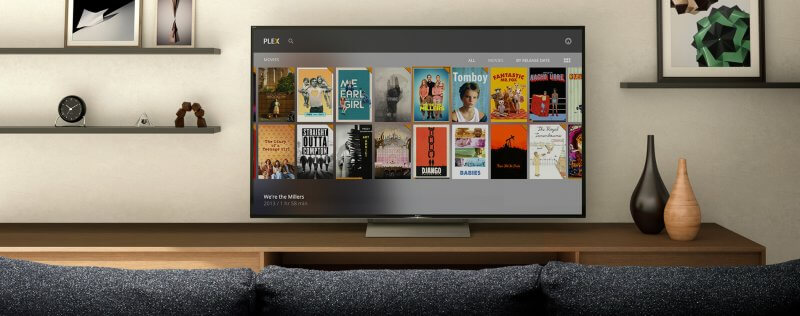Streaming sticks and boxes
Streaming sticks and boxes are designed to make it easy to access all of your different entertainment apps in one place.

Streaming sticks and boxes are the cord cutting world’s answer to cable boxes.
Streaming sticks and boxes work in pretty much the same way: you plug them into your TV’s HDMI jack, and they let you navigate simple menus with a remote control. You click to enter apps and choose the content you’re looking for.
Here’s the lowdown on the top streaming sticks and boxes are designed to make it easy to access all of your different entertainment apps in one place. devices currently available, along with a few general comments about other popular types of solutions. Take a look and see which product fits you best.
Streaming boxes
Streaming boxes generally retail for around $100–$150. They’re pricier than the smaller streaming sticks, but they have some advantages. Most offer the ability to plug in external USB drives, which you can use to play local video files. All of the streaming boxes here include an Ethernet jack, which means you can plug the box directly into your router. Wired internet means smoother streaming, since you don’t have to rely on your Wi-Fi connection. Finally, these devices are generally more powerful than their smaller cousins, so they perform a little better and offer additional features, like voice search.
Amazon Fire TV
Fire TV has a lot to offer. Amazon’s video offerings are prioritized throughout the operating system, which is nice for Amazon fans. It has a crisp, Android-based operating system and a large app selection. Its gaming options far outstrip what you can get on Roku, Apple TV, or Chromecast. It has a voice search feature. The device isn’t perfect, of course; the operating system isn’t as simple as Roku’s or Apple TV’s.
Apple TV
Apple has its own entry into the streaming box wars. The Apple TV has a special appeal to lovers of Apple products, because it boasts the ability to mirror the screen of your iOS device (iPad or iPhone), much as the Chromecast can do with Android devices. The Apple TV also features a simple and intuitive user interface in line with Apple’s brand.
NVIDIA SHIELD
The NVIDIA SHIELD uses an Android-based operating system called Android TV. NVIDIA made its name making graphics cards for gaming PCs, so it’s no surprise that this device caters to gamers. Out of the box, SHIELD includes a gaming controller and boasts the ability to stream games from your gaming PC. On top of this gaming functionality, of course, SHIELD is a pretty darn good streaming device with access to the Android TV app library. Additionally this device is the only one that can host a Plex Media Server making it even more versatile for cord cutters.
Roku
The Roku interface is very pleasant and exceedingly simple, which makes the Roku devices an excellent choice for families and less tech-savvy cord cutters. Roku’s operating system also has a very robust app selection. Roku is very short on decent gaming apps, however, so if you’re looking for a streaming box with gaming potential, this isn’t it.
The Roku Ultra is the latest and greatest of Roku’s full-size boxes. It’s 4K Ultra HD capable, lightning fast, well designed and it has a nice voice search.
Streaming sticks
Not everyone needs a streaming box. While streaming boxes are powerful and versatile, they’re pricier and less portable than streaming sticks. A streaming stick could be a better solution for a more budget-minded consumer, or for users who want to buy multiple products for multiple TVs.
Unlike streaming boxes, not all streaming sticks work the same way. While many devices (such as the Roku Streaming Stick and Amazon Fire TV Stick) are essentially less powerful versions of their streaming box cousins, Google’s Chromecast, for example, operates in a totally different way. The Chromecast doesn’t really have much of an operating system at all – instead, it acts as a receiver for your mobile devices or computers, letting you sling content up into the big screen with the touch of a button. We’ll cover each device in a bit more detail below.
Amazon Fire TV Stick
As you might expect, the Amazon Fire TV Stick is a mini version of the Amazon Fire TV. The trade-offs are pretty straightforward: you’ll rely on Wi-Fi instead of wired internet (which can make streaming less reliable) and will have a less powerful device. The Fire TV Stick remote is also missing the voice search feature, though you can still upgrade to the voice search remote or use your smartphone to perform the voice search function.
Chromecast
Google’s Chromecast is the most unique streaming option on the market. The Chromecast is a disc-shaped device that attaches to your TV’s HDMI port. Turn on your TV and you’ll just see a screensaver – there’s no user-facing operating system or remote control for the Chromecast. Instead, the Chromecast uses Wi-Fi to display streams from your phone, tablet, or computer. You’ll have to download the Google Cast app on your device – once you do that, you’ll see Google’s now-famous little “cast” button in a bunch of your video player apps. Just tap that and select your Chromecast to play your content.
Roku Streaming Stick
Roku’s Streaming Stick is a solid little device that replicates the Roku streaming box experience with less powerful hardware. The basics are the same as they are with other Roku players: you’ll still get Roku’s operating system (which is arguably the main appeal) and a very similar-looking controller. Some of the flashier functionality is gone, including the voice search feature and the USB port. And, like all streaming sticks, the Roku Streaming Stick operates only on Wi-Fi. That can sometimes mean shakier streaming, although the Roku Streaming Stick (like all the sticks on this list) still handles all major streaming apps quite well.
Video game consoles – other streaming sticks and boxes
Modern video game consoles support apps like Netflix and Hulu, making them decent streaming solutions for families and gaming fans. We won’t spend too long on them here, because if you’re not a gamer, there’s really no reason to buy a PlayStation instead of a Roku. But if you are a gamer, there are a few pros and cons to consider if you also want to use them as streaming sticks and boxes.
There isn’t a huge difference between Sony’s PlayStation 4, Microsoft’s Xbox One, and Nintendo’s Wii U in terms of app support. None of them will net you the wide app library that you’ll get from a streaming box like a Roku or a Fire TV. In addition, most consoles won’t connect you to the internet for free – you’ll most likely have to sign up for a subscription service like PlayStation Plus, which raises the cost of this solution (Nintendo’s Wii U is the exception to this subscription requirement).
If you already own a console and already have an online gaming account, you’ll find that your console is a decent streaming solution. But streaming capabilities alone aren’t a good reason to invest in a gaming console. These machines are gaming machines first and foremost, so keep that in mind. If you do want an all-in-one streaming and gaming machine, you may want to consider a PC. Gaming PCs are generally pricier than consoles, but they’re better for streaming, easily upgradeable, don’t charge annual fees for internet access, and have cheaper games.




